Love it or not, there is no disputing the fact that the Crabbie's Grand National at Aintree is the most famous jumps race in the world, and has been for a very long time. As with all major sporting institutions, certain traditions and myths have built up around the event.
Those traditions range from some of the fences themselves – the likes of The Chair, Becher’s Brook and The Canal Turn do not exist anywhere else, which may be no bad thing – to the improbably long time taken in agonising over the weights by the official handicapper.
The myths are largely harmless and include a recent one that the change in the distance – from four miles and four furlongs for many years to four miles two furlongs and 74 yards this time round – is essentially down to alterations in ways of measuring.
Other than moving the start forward half a furlong a few years ago, Google Earth confirms that the difference is primarily down to the distance of the great race having been wrong all along!
Another assertion that is worth investigating is that there has been an uplift in the quality of the race in recent years. This year’s contest may prove stronger than usual, but simple comparisons with the previous decade should come with a large caveat.
As BHA Handicapper Phil Smith observed when unveiling the initial weights at a swank lunch back in February, there were more horses rated between 140 and 149 entered than before, as well as more horses rated 155 or higher, something in which he seemed to take personal pride.
This is where myth is in danger of straying into fantasy. Smith, as a former teacher, should know about the dangers of being allowed to mark your own homework.
On one level, the case seems to be made. Between 2006 and 2015, the mean, median, highest rating and lowest rating of horses which actually ran in the race rose in official terms, as can be seen in the following.

All of those measures have headed upwards, if less so in recent years.
But to think that this automatically means that “the world’s greatest race just keeps getting better” requires that you believe that apples are being compared with apples. That is not necessarily so.
As was recently pointed out by Kevin Blake in an excellent attheraces.com blog, and has been known by Timeform for some time, the level of BHA ratings has not remained static: far from it.
On the Flat, long-term slippage in ratings’ levels prompted a wholesale “recalibration” of past ratings of leading horses (all the way back to Dancing Brave) a few years ago, while over jumps the problem is in the opposite direction, known as “inflation”.
The inflationary effect of official jumps ratings can be seen at levels other than those looked at by Blake, as shown in the following box plots for all chasers which ran off BHA marks in a given calendar year (highest figure within each calendar year used for each individual horse).

The blue-shaded box represents the inter-quartile range, or area into which the middle 25% to 75% of the population falls, with the vertical “whiskers” indicating the extent of the more extreme ratings outside that.
The horizontal black line inside the blue box is the median for the entire population. It can be seen that this line, as well as the boxes themselves, have moved upwards significantly over even a short period of time
As the ratings’ level of the entire jumps horse population has been rising, then what it takes to achieve those representative figures in recent Grand Nationals is likely to have been getting commensurately easier.
One way to look at this is to see what the ranking of a horse needed to be in the wider horse population to achieve the highest, median and lowest marks in the Grand National itself.

This tells a somewhat different story. While the BHA marks associated with the Grand National have increased by around 5 lb in the last decade – whether judged by highest, median or lowest marks – some of those figures have slipped in “real” or comparative terms.
The last two editions have featured top-weights inside the top 10 chasers to run off handicap marks in Britain in that calendar year.
So far, so good. But two of the last three Grand Nationals have been substandard as judged by median ratings and all the last four have been worse than average in terms of the wider ranking required to get a run off the lowest mark of all.
The 2013 contest was easily the worst by this last measure – a horse needed only to sneak into the top 400 chasers in that year to get a run – while the 2009 event was much better and off limits to anything outside the top 200.
Last year’s race was the worst in terms of the ranking required to achieve a median mark for those who ended up running.
At first glance, it may appear that the Grand National has, indeed, been getting steadily better of late. But, with the possible exception of the participation of a few more of the very best horses, that has been not so much true as a result of an upwards drift in ratings.
The same impression – and the same contradictory reality – would likely apply to any other race chosen at random over that period, whether it was a chase or a hurdle, and whether it was one of the world’s greatest races or a run-of-the-mill event.
Get a FREE Timeform Race Pass for the 2016 Crabbie's Grand National






















.jpg)


 Url copied to clipboard.
Url copied to clipboard.



.jpg&w=300)



.jpg&w=300)































